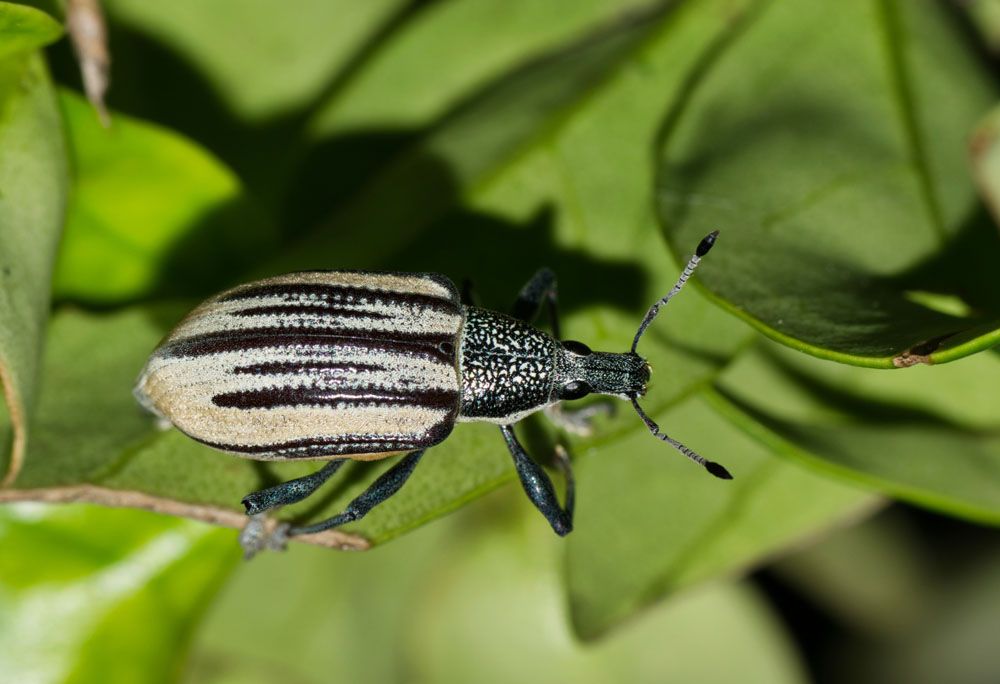
Diaprepes Root Weevil – Diaprepes abbreviates
Diaprepes Root Weevil (Diaprepes abbreviates)
Common Name: Diaprepes Root Weevil
Latin Name: Diaprepes abbreviates
Appearance:
- Adult weevils range in length from 0.95 to 1.90 cm (3/8 to 3/4 inch).
- They are black with minute white, red-orange, and yellow scales on the elytra (wing covers). These scales are frequently rubbed off the tops of ridges on the elytra, producing the impression of black stripes on a light-colored background.
- Adults emerge from pupae in the earth armed with a pair of deciduous mandibles that break off as they burrow through the dirt to come above ground. Scars are evident under a microscope at the place where the deciduous mandibles break off.
